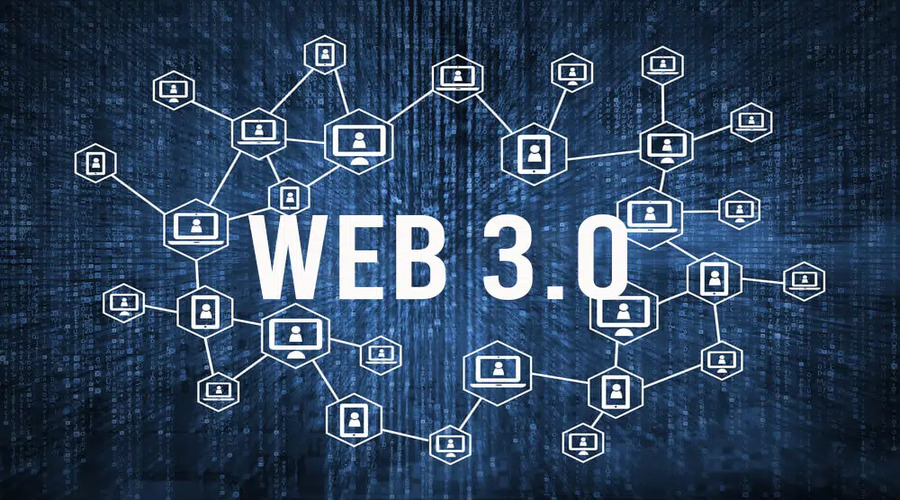In the past few years, digital art has taken the world by storm. With the advancement of technology, the concept of digital art has evolved from just being a mere image on a computer screen to a valuable asset that can be bought, sold, and traded. Digital art has become so popular that it has given birth to a new industry of digital art and collectibles. This industry has created a new avenue for artists to showcase their work and collectors to invest in the art world. However, as the world moves towards a decentralized and more secure digital space, the future of digital art and collectibles lies in Web 3. In this article, we will explore the concept of Web 3 and its impact on the future of digital art and collectibles.
Understanding Web 3
Before we dive into the future of digital art and collectibles, it is essential to understand what Web 3 is. Web 3, also known as the decentralized web, is the next stage of the internet’s evolution. It is a more secure, transparent, and decentralized version of the internet. The current version of the internet, Web 2, is controlled by a few giant corporations that have access to all the user’s data. In contrast, Web 3 is designed to be decentralized, meaning there is no single authority or entity that controls it. Instead, it is based on blockchain technology, which is a decentralized and secure way of storing and transferring data.
Impact of Web 3 on Digital Art and Collectibles

Web 3 has the potential to revolutionize the digital art and collectibles industry in several ways. Let’s take a look at some of the ways Web 3 will impact the industry.
1. Authenticity and Ownership
One of the biggest issues with digital art is the lack of ownership and authenticity. In the current system, anyone can copy and reproduce digital art without any consequences. However, with Web 3, digital art can be stored on a blockchain, which provides proof of ownership and authenticity. Each digital art piece will have a unique digital signature that can be traced back to the owner.
2. Security
Another significant issue with digital art is security. Digital art is vulnerable to hacking and theft. However, with Web 3, digital art can be stored on a decentralized and secure network. This means that the artwork is protected from hackers and cannot be stolen or tampered with.
3. Decentralization
The decentralization aspect of Web 3 is a significant advantage for digital art and collectibles. Decentralization means that there is no single point of failure, and no single entity has control over the network. This makes the system more resilient and secure.
4. Transparency
Web 3 is designed to be transparent. This means that all transactions on the network can be viewed by anyone. This level of transparency is essential for the digital art and collectibles industry as it ensures that all transactions are legitimate and above board.
5. Smart Contracts
Web 3 is powered by smart contracts, which are self-executing contracts that can be programmed to perform specific functions. Smart contracts are essential for the digital art and collectibles industry as they can automate the buying and selling process, eliminating the need for intermediaries.
6. Interoperability
Interoperability is the ability for different blockchain networks to communicate with each other seamlessly. In the context of digital art and collectibles, interoperability is crucial for the smooth transfer and exchange of assets between different platforms. Web 3’s decentralized nature means that different networks can communicate with each other without the need for intermediaries, making interoperability a key feature of the technology.
7. Tokenization
Tokenization is the process of representing a physical or digital asset as a digital token on a blockchain network. In the context of digital art and collectibles, tokenization allows artists to create unique digital assets that can be bought, sold, and traded. The tokenization of digital art and collectibles allows for the creation of new revenue streams for artists and collectors, as well as increasing transparency and authenticity.
8. Digital Identity
Digital identity is the digital representation of an individual’s identity. In the context of Web 3 and digital art and collectibles, digital identity is crucial for ensuring authenticity and ownership of digital assets. Each digital art piece can be linked to the owner’s digital identity, ensuring that the ownership and authenticity of the asset can be verified.
9. NFTs
NFTs, or non-fungible tokens, are unique digital assets that are stored on a blockchain network. In the context of digital art and collectibles, NFTs allow artists to create one-of-a-kind digital art pieces that cannot be replicated or copied. NFTs have become increasingly popular in the digital art and collectibles industry, with some pieces selling for millions of dollars.
10. Social Impact
Web 3 and digital art and collectibles have the potential to create significant social impact by democratizing access to the art world. The decentralization and transparency of Web 3 allow for more inclusivity and diversity in the industry, as artists from around the world can showcase their work on a global platform. Additionally, the tokenization of digital assets allows for fractional ownership, meaning that collectors can own a small piece of a valuable artwork, making the art world more accessible to a wider audience.
11. Sustainability
As the world becomes more environmentally conscious, sustainability has become a crucial factor in the adoption of new technologies. In the context of Web 3 and digital art and collectibles, sustainability is a concern as blockchain technology consumes a significant amount of energy. However, some blockchain networks, such as proof-of-stake, are more energy-efficient and sustainable than others, and the industry is exploring ways to reduce its carbon footprint.
12. Fractional Ownership
Fractional ownership is the ownership of a portion of a valuable asset. In the context of digital art and collectibles, fractional ownership allows multiple people to own a small piece of a valuable artwork, making it more accessible and affordable for a wider audience. Blockchain technology enables fractional ownership by allowing for the creation of digital tokens that represent a portion of the asset.
13. Intellectual Property Rights
Intellectual property rights are crucial in the digital art and collectibles industry, as the ease of reproduction and distribution makes it challenging to protect the ownership of the artwork. With blockchain technology, digital art pieces can be linked to a unique digital signature, providing proof of ownership and authenticity. Additionally, smart contracts can be programmed to enforce intellectual property rights, ensuring that the artist’s rights are protected.
14. Cross-Industry Collaboration
Web 3 and digital art and collectibles have the potential to revolutionize not only the art world but also other industries. The decentralized and transparent nature of blockchain technology can be applied to other fields, such as finance, healthcare, and real estate. Cross-industry collaboration can lead to the creation of innovative solutions and business models that benefit multiple industries.
15. User Experience
User experience is a critical factor in the adoption of any new technology. In the context of Web 3 and digital art and collectibles, user experience is crucial in ensuring that the technology is accessible and easy to use for artists and collectors. The industry is exploring ways to improve user experience, such as through the creation of user-friendly interfaces and the integration of new technologies like virtual reality.
Challenges
- Lack of awareness and understanding of blockchain technology among artists and collectors
- Lack of standardization in the industry for storing and transferring digital art
- High transaction fees and slow processing times associated with some blockchain networks
- Difficulty in interoperability between different blockchain networks
- Concerns over the environmental impact of blockchain technology
Opportunities
- Monetization of digital art through direct sales to collectors, eliminating the need for intermediaries
- Creation of unique and scarce digital art pieces through blockchain technology, increasing the value and exclusivity of the artwork
- Increased transparency and authenticity through the use of blockchain technology
- Automation of the buying and selling process through smart contracts, reducing transaction fees and eliminating the need for intermediaries
- Democratization of the art world by making it more accessible to a wider audience through fractional ownership
- Ability to create significant social impact by promoting inclusivity and diversity in the industry
Conclusion
In conclusion, the future of digital art and collectibles lies in Web 3. Blockchain technology has the potential to revolutionize the way we create, collect, and sell digital art and collectibles by providing authenticity, security, decentralization, transparency, and the ability to create unique and scarce digital art pieces. The industry is exploring new business models and revenue streams, such as fractional ownership and NFTs, that were previously impossible. However, the industry still faces challenges, such as lack of awareness and understanding of the technology and concerns over sustainability. As more artists and collectors become familiar with blockchain technology, we can expect to see significant shifts towards Web 3 in the digital art and collectibles industry, leading to increased inclusivity, diversity, and innovation.





